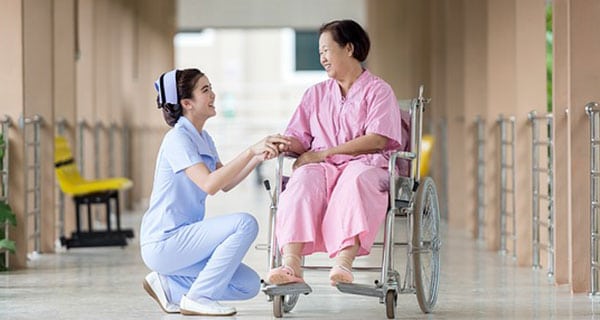
Frail and critically ill patients can safely bike in the intensive care unit, even early in their stay. These exciting findings come from an in-bed cycle program that aims to get hospital patients – even in ICU – pedalling as soon as possible, so they’re functioning better by the time they leave hospital.
Why add a fitness plan for patients who already have many critical medical issues? Because patients who are stuck in bed need in-bed cycling the most.
Anyone who’s tried hitting the gym or recovered from injury knows that muscles can take weeks to strengthen. But did you know that muscles only take days to quickly deteriorate?
After only seven days in a critical care bed, one study noted that patients’ muscle strength was four times weaker than in healthy controls. After 10 days of critical care with mechanical ventilation, patients’ leg muscles decreased in size by almost 18 per cent.
In fact, many previously active patients are unable to walk when they are discharged from critical care due to profound muscle weakness. In new research, my colleagues and I show how we start to think of rehabilitation very early in a patient’s ICU stay to help prevent or minimize this weakness.
What’s in-bed cycling?
The specialized in-bed cycle rolls over a patient’s bed. The cycle has a motor and can move a patient’s legs, or the patient can cycle on their own. The patient stays on their back and their lower legs and feet are secured into slings and pedals. When attached, their legs move in a cycling motion.
The cycle has a video screen to help motivate more alert patients with animation of their virtual ride.
In-bed cycling is an especially promising early exercise intervention because it targets the legs, particularly hip flexors, which are most vulnerable to muscle atrophy and weakness during bed rest.
Cycle therapy can also safely begin right after resuscitation, while patients are still attached to life support, whether patients are awake or sedated.
We recently conducted a study with frail and critically-ill patients connected to machines that help them breathe to see if they could start cycling very early in their ICU stay. We found cycle therapy safe because there were very few times where patients stopped cycling early due to medical concerns. And more than 90 per cent of patients or substitute decision-makers agreed to participate in the study.
So far, our team has trained eight ICU facilities and more than 45 physiotherapists across Ontario to provide in-bed cycling as part of our research.
The rest of the country is still waiting for cycle therapy. But hospitals across the country should review and expand their approach to rehabilitation.
Patients in critical care are rigged up to all sorts of specialized equipment, including machines to support breathing, medication pumps and monitors. Despite all this investment, few critically-ill patients receive exercise, which is key to their recovery.
ICU studies show that exercise is more effective than changes in nutrition or different methods of mechanical ventilation for improving long-term physical function in critically ill adults.
But critically ill and frail patients are often perceived as too sick for physiotherapy. Rehabilitation in the ICU can be infrequent and, when provided, may occur late in a patient’s ICU stay.
Without rehabilitation, physical strength quickly deteriorates and patients wind up leaving ICU with new weaknesses. This can result in longer hospital stays, higher mortality risks and more health-care costs.
Canada’s population is aging and Canadians older than 65 account for 78 per cent of the three most expensive types of hospitals stays: cardio-pulmonary disease, pneumonia and heart failure without angiogram. These conditions all require time in ICU.
Yet we’ve recently witnessed cutbacks to physiotherapy services in acute care hospitals.
It’s time to change the way we view exercise for frail and critically-ill patients. As soon as we resuscitate, we need to think of starting rehabilitation to optimize recovery.
Early in-bed cycling is one creative approach for critically-ill patients, for our aging population and to provide significant savings down the road.
Michelle Kho is an assistant professor in the School of Rehabilitation Science at McMaster University, physiotherapist at St. Joseph’s Healthcare Hamilton, and Network Investigator with Canadian Frailty Network. She holds a Canada Research Chair in Critical Care Rehabilitation and Knowledge Translation.
Michelle is a Troy Media Thought Leader. Why aren’t you?
The views, opinions and positions expressed by columnists and contributors are the author’s alone. They do not inherently or expressly reflect the views, opinions and/or positions of our publication.
